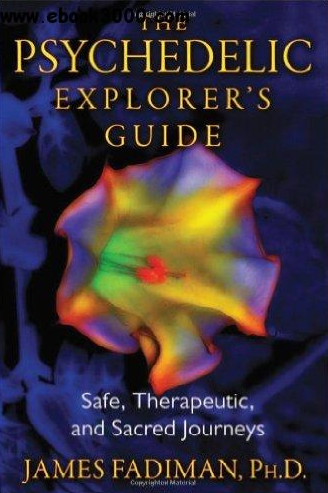The Psychedelic Explorer’s Guide: Safe, Therapeutic, and Sacred Journeys by James Fadiman is a comprehensive guidebook for those interested in exploring the therapeutic potential of psychedelic substances. Fadiman, who has been involved in psychedelic research since the 1960s, is considered one of America’s wisest and most respected authorities on psychedelics and their use. In this book, he provides a wealth of information on how to safely and responsibly use psychedelics for therapeutic purposes.
The book is divided into three parts. The first part provides an overview of psychedelics and their history, as well as an introduction to the concept of set and setting. Fadiman emphasizes the importance of creating a safe and supportive environment for a psychedelic journey and guides how to do so. He also discusses the different types of psychedelics and their effects, as well as the risks and benefits of using them.
The second part of the book is focused on the practical aspects of preparing for a psychedelic journey. Fadiman provides detailed instructions on how to prepare mentally, emotionally, and physically for a journey, as well as how to choose a guide or sitter. He also discusses the importance of intention setting and guides how to do so effectively.
The third part of the book is focused on the journey itself. Fadiman guides how to navigate the different stages of a journey, as well as how to deal with challenging experiences. He also discusses the importance of integration and guides how to integrate the insights gained from a journey into one’s daily life.
Throughout the book, Fadiman emphasizes the importance of the responsible and ethical use of psychedelics. He stresses the importance of having a guide or sitter and guides on how to choose one. He also discusses the importance of transparency and communication between the guide and the voyager and guides on how to establish a safe and supportive relationship.
One of the strengths of The Psychedelic Explorer’s Guide is its emphasis on the therapeutic potential of psychedelics. Fadiman provides numerous examples of how psychedelics have been used to treat a variety of conditions, including depression, anxiety, addiction, and PTSD. He also discusses the potential benefits of using psychedelics for personal growth and spiritual exploration.
Another strength of the book is its emphasis on safety. Fadiman provides detailed guidance on how to minimize the risks associated with psychedelic use, including the importance of proper dosing, preparation, and setting. He also discusses the potential risks associated with certain medical conditions and medications and guides how to minimize these risks.
Overall, The Psychedelic Explorer’s Guide is an invaluable resource for anyone interested in exploring the therapeutic potential of psychedelics. Fadiman’s extensive experience and expertise in the field make him a trusted and authoritative guide. The book provides a wealth of information on how to safely and responsibly use psychedelics for therapeutic purposes and is an essential resource for anyone interested in this field.



















